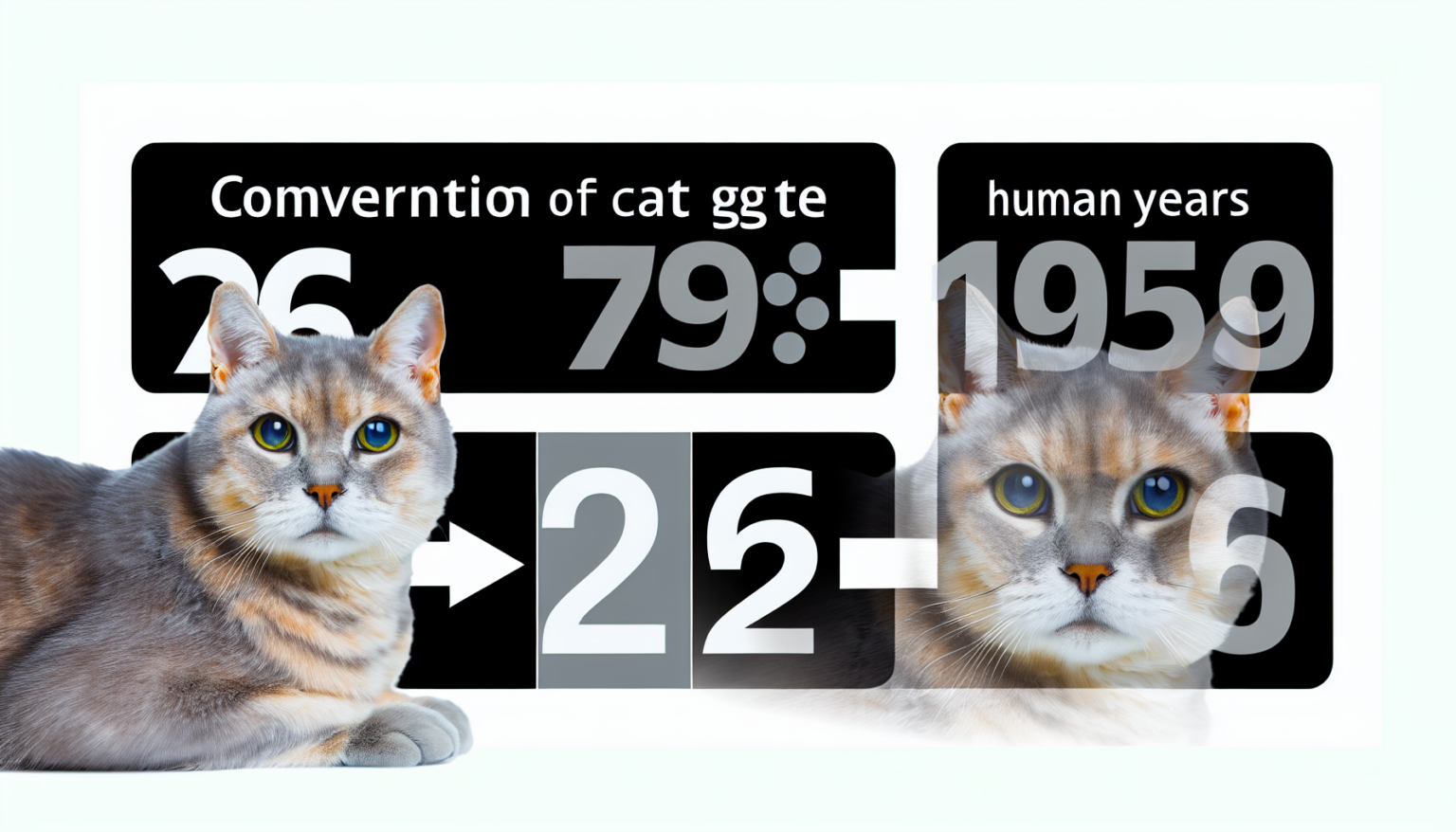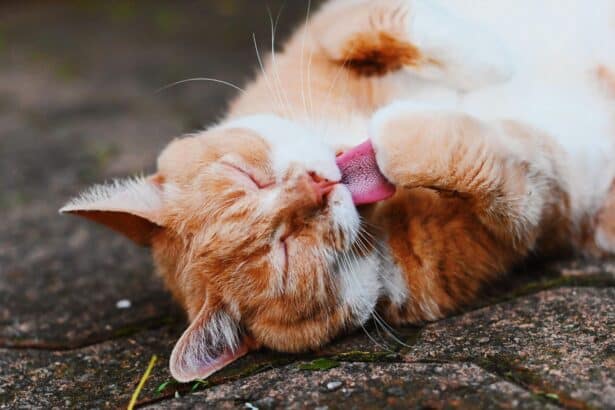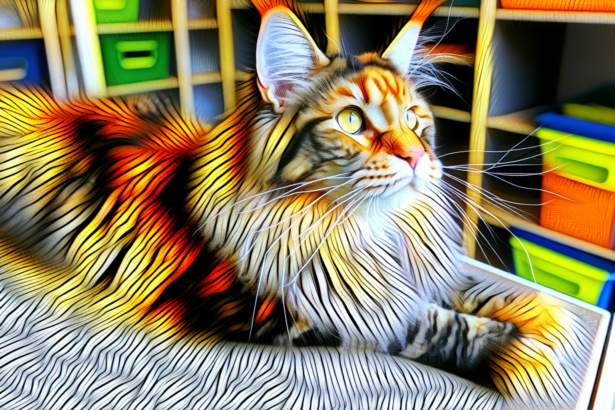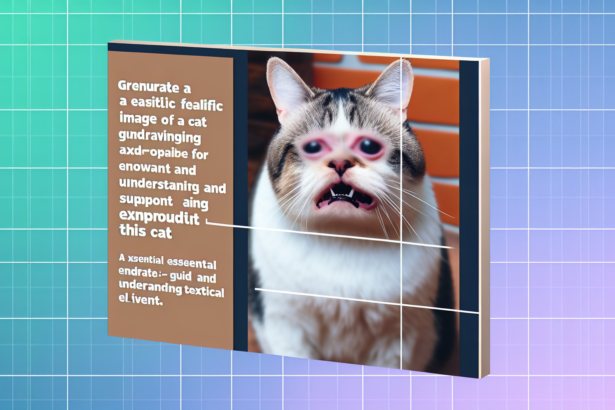We’ve all heard it: just multiply by 7 to get your cat’s age in human years. Handy… and mostly wrong. Cats rocket through their early months, then slow right down—nothing like our own timeline.
Here’s the good news: there’s a simple formula that’s both accurate and easy to remember. No calculator panic, promise.
Why translate your cat’s age into human years?
It helps you time things right—food, play, vet checkups, even small home tweaks. A 2-year-old cat doesn’t need the same care as a 12-year-old.
It also explains behavior. Teen-like cats test boundaries; seniors nap more and may play less. When you understand their “stage,” you support them better.
Big life changes coming up? Knowing your cat’s life stage makes it easier to reduce your cat’s stress without overdoing it—or missing what they need.
The “rule of 7” falls short
One cat year does not equal seven human years. By 1 year, a cat is roughly like a 15-year-old human—not a 7-year-old. At 2 years, your feline is about 24 in human years.
After that, aging slows. So the rule of 7 makes young cats seem younger than they are and seniors much younger than they feel, which can throw off health monitoring.
The simple formula that actually works
- 1 cat year ≈ 15 human years
- 2 cat years ≈ 24 human years
- Each year after that = +4 human years
Quick examples
- 3 years ≈ 28 years
- 5 years ≈ 36 years
- 10 years ≈ 56 years
- 15 years ≈ 76 years
- 20 years ≈ 96 years
Want a step-by-step for edge cases and easy math? Try this simple method to calculate your cat’s age.
Memory trick you’ll actually use
Save a note in your phone with your cat’s adoption age. Each birthday, add 4 “human years” to your saved number. Two taps, zero guesswork.
Life stages at a glance (and what to adjust)
- Kitten (0–6 months): fast growth, social learning. Needs kitten food, variety in play, gentle handling.
- Junior (6 months–2 years): curious, energetic, sometimes cheeky. Spay/neuter and soft, consistent education help.
- Adult (2–6 years): stable routine. Watch boredom and weight, keep play challenging.
- Mature (7–10 years): mind the scale, joints, and teeth. Small home tweaks make a big difference.
- Senior (11–14 years): more frequent checkups, plush bedding, easy-access litter.
- Geriatric (15+ years): warmth, comfort, and close observation of subtle changes.
Curious how long cats usually live and what truly helps? Here’s everything on cat lifespan and longevity.
Age-smart care tips
- 0–24 “human years” (0–2 cat years): daily interactive play, multiple scratch options, core vet care, carrier training.
- 28–40 “human years” (3–6 cat years): fitness maintenance, weight checks, dental prevention, enriched environment.
- 44–60 “human years” (7–10 cat years): non-slip rugs, slightly raised bowls, regular screenings, watch for subtle shifts in thirst or appetite.
- 60+ “human years” (11+ cat years): warm, easy-access beds, low-entry litter boxes, gentle play, more frequent checkups.
Common mistake to avoid: lowering protein too early for seniors. Older cats often need high-quality, digestible protein to preserve muscle; the real lever is adjusting calories and portion size. For balanced ideas by age, see our feeding tips.
And if your whiskered roommate naps more these days, that’s normal—just make sure the rest/sleep rhythm fits their stage. Here’s a handy guide to how much cats sleep.
Home hacks + fun fact
- Practical tip: Stick a tiny “wellness strip” inside a cupboard door: columns for Cat Age, Human Age, and To‑Do (weigh-in, nail trim, deworming, vet). One quick update each month = serene, organized care.
- Fun fact: Around 6 months old, most cats have their full 30 adult teeth—perfect timing to make dental care a habit.
Moving, traveling, or welcoming a new baby? A few small adjustments can keep whiskers calm. Here are smart ways to support a stressed cat with kindness.
Mini conversion cheat sheet
- 1 cat year ≈ 15 human years
- 2 cat years ≈ 24 human years
- 5 cat years ≈ 36 human years
- 10 cat years ≈ 56 human years
- 15 cat years ≈ 76 human years
- 20 cat years ≈ 96 human years
FAQ
What is the human age of a 3, 7, 12, or 18-year-old cat?
3 ≈ 28; 7 ≈ 44; 12 ≈ 64; 18 ≈ 88. After age 2, add 4 human years per cat year—simple and consistent.
How can I estimate the age of a rescue cat with no history?
Your vet checks teeth, eyes, muscle tone, and coat for a solid estimate. Behavior and activity level help refine the range.
Do certain breeds live longer than others?
Individual care and lifestyle matter most. Stable weight, quality diet, and preventive vet care outweigh breed alone.
When is a cat considered a senior—and what should I change?
Around 11 years. Adjust diet, make home access easy, and plan more regular checkups. Gentle play keeps bodies and minds happy.








